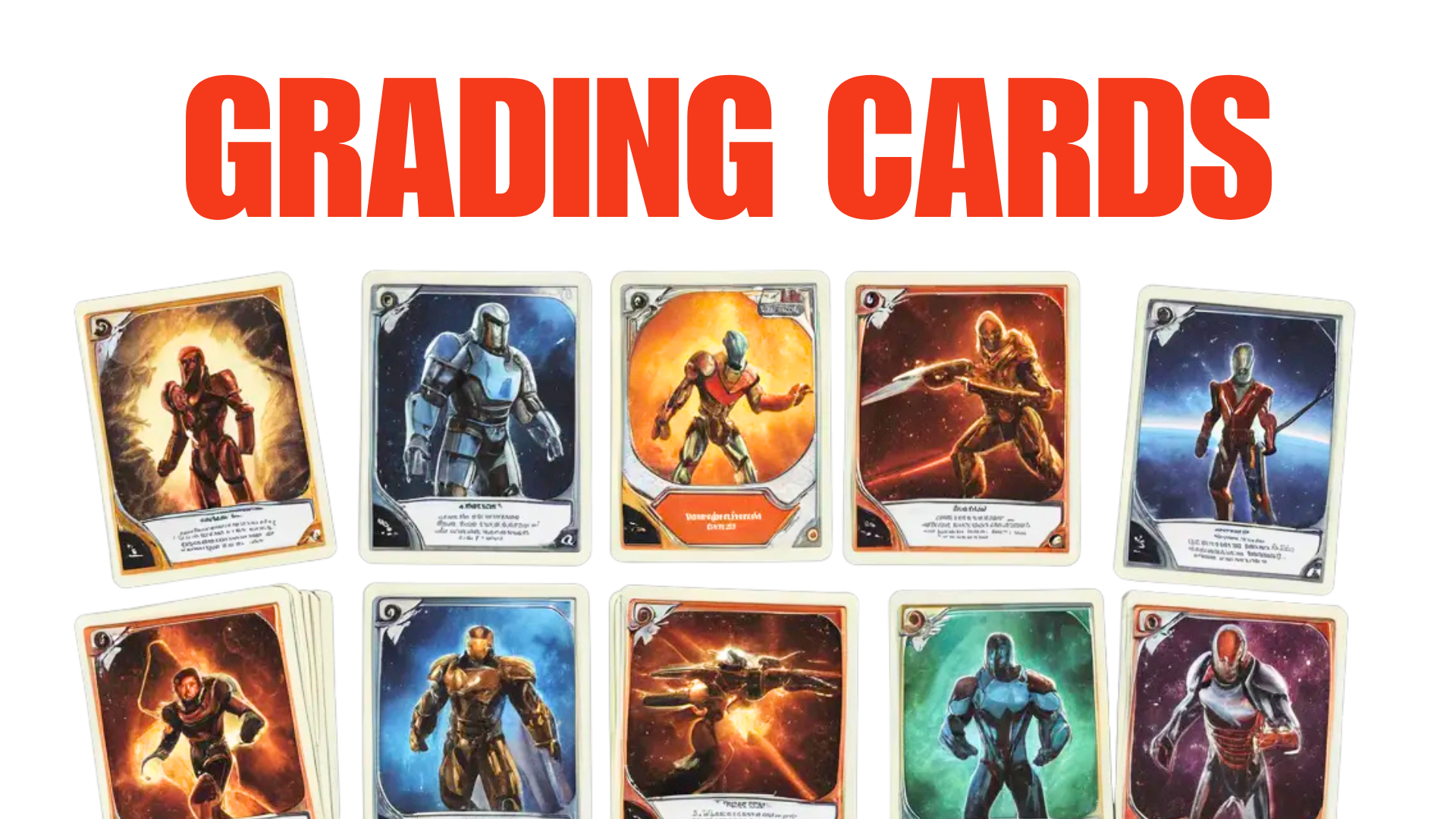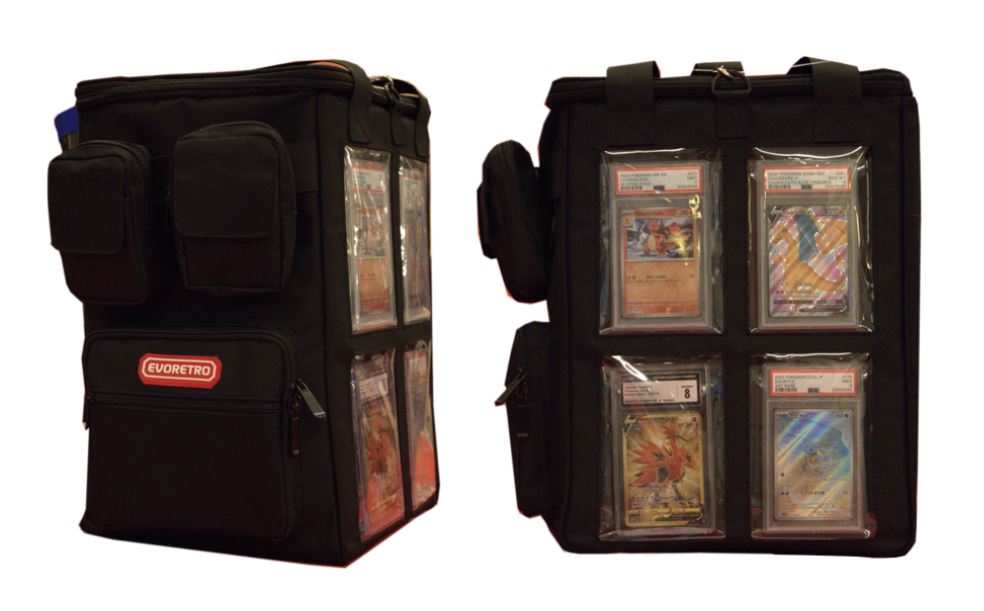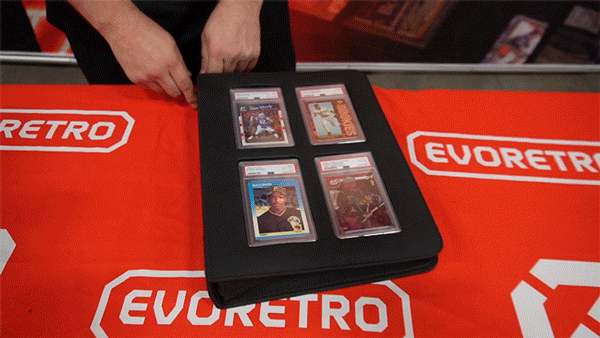Let’s set the stage. You’re a proud trading card collector. Maybe you’ve been collecting since your first Pokémon pack in the playground, or perhaps you’re rediscovering the joy of trading cards as an adult. Either way, you’ve got some cards in your stash that you know are special. It might be time to start grading trading cards.
Maybe it’s your holographic Charizard, that rare Black Lotus, or even a promo card with sentimental value. But here’s the thing: when it comes to trading cards, condition is king.
Maybe you’ve asked yourself questions like:
- “How much is this card actually worth?”
- “Am I imagining the scratches on this card, or are they really there?”
- “If I want to sell this card, will anyone believe me when I say it’s in perfect condition?”
That’s where grading trading cards takes your raw, unprotected card and verifies its condition for you. It’s like an official stamp of approval backed by professionals with magnifiers, precise tools, and years of experience. Graded cards are sealed in sturdy cases that not only protect them from further wear and tear but also give you peace of mind. Whether you’re a collector, investor, or trader, a graded card is a certified treasure.
Why Grading Trading Cards Is Important
Grading trading cards might seem intimidating at first, but think about what it gives you:
- Protection: Your card is sealed away safely, no more worrying about accidental coffee spills or sticky fingers.
- Authentication: The grading company confirms your card’s legitimacy, giving it credibility whether you’re buying or selling.
- Value: A graded card carries more weight in the market because it’s certified by experts.
At the end of the day, grading can turn your card into a piece of art, a collector’s gem, or an investment. And while not every card needs grading, it’s worth considering for those special ones in your collection.
Now, this is where I come in. Consider me your friendly guide — the person who’s here to tell you exactly how grading works and what those mysterious grades actually mean. Don’t worry, I’ll walk you through it step by step. Ready? Let’s do this!
How Grading Trading Cards Works
The Basics of the CGC Grading Trading Cards Scale
Grading trading cards on a scale from 1 to 10, with half-point increments for those “almost there” cards. Each grade reflects how well your card has survived the test of time (or your shuffling skills!). Higher numbers mean better condition, with 10 being the absolute pinnacle of perfection. The idea is simple: the closer your card gets to that pristine level, the more valuable and desirable it is. But what exactly are the graders looking for? Let me break it down for you:
1. Centering: Is It in the Middle?
Let’s start with something that’s easy to notice once you know what to look for: centering. This refers to how evenly the design of the card is placed in the borders. Imagine you’re looking at that Charizard card. Does the image look perfectly centered, or is it leaning toward one side?
- 50/50 centering is perfect — dead center and equal on all sides. You’ll need this for that elusive CGC 10 Pristine grade.
- As misalignment creeps in, the borders start to look uneven (like 60/40 or worse). The further off-center the card is, the more points it loses.
Pro tip: Don’t beat yourself up if your card isn’t perfectly centered. Even brand-new cards right out of the pack can have centering issues thanks to the printing process!
2. Corners: The Sharpness Test
Next, graders inspect the corners. Are they sharp and crisp, or do they look a little worn or rounded? A perfect card will have clean, flawless corners that look like they’ve never been touched.
- Higher grades (8 and above) need sharp corners with almost no wear.
- Lower grades allow for dings, rounding, or obvious wear.
So if you’ve got a card that’s been played with or shuffled a lot, it might have some corner wear — and that’s okay! It’s all part of the card’s story.
3. Edges: Smooth as Butter
The edges are where things can get tricky. Graders check for nicks, chipping, or wear along the sides of the card. If the edges are rough or have little flakes missing, it’ll impact the grade.
- A pristine card? Perfect edges, no flaws whatsoever.
- A well-loved card? It might show some chipping or wear, especially on darker edges.
4. Surface: The Big Reveal
Finally, there’s the surface, and this is probably the most nitpicky (but important!) part of grading. Graders look for:
- Print lines or spots.
- Scratches or scuffs.
- Stains, creases, or discoloration.
- Loss of gloss (the shiny finish on the card).
A perfect surface will look smooth and flawless under both natural light and magnification. If your card has light scratches or even a single crease, it’s going to drop in grade.
The CGC Grading Trading Cards Scale: What’s It All About?
When it comes to grading trading cards, CGC (Certified Guaranty Company) has a super precise system. They use a 1 to 10 scale — with 10 being the holy grail of perfection — plus half-point increments for those in-betweeners. Half points are like little pats on the back for cards that nearly make it to the higher grade but don’t quite get there. Think of them as a small consolation prize! Here’s a breakdown of the grades and what to look for:
The Top Dogs of Grading Trading Cards: Pristine and Gem Mint
CGC 10 / Pristine
The absolute pinnacle of card grading. A Pristine 10 is as close to perfection as you’ll ever get. To earn this prestigious grade, the card must be:
- Completely flawless — no spots, scratches, or anything funky.
- Perfectly centered at 50/50 on both the front and back. This means the image is dead center, with even borders all around. (For reference, if it’s a little off, like 60/40, it starts losing points.)
Think of it as the unicorn of trading cards! Spotting one in the wild is rare, but oh-so-satisfying.
CGC 10 / Gem Mint
Gem Mint 10 is almost perfect to the naked eye and pretty darn close even under a magnifier. Here’s what you need:
- Surface perfection: No print spots, no scratches, and perfectly glossy!
- Centering that’s 55/45 or better on the front and 75/25 on the back. (Translation: slightly off-center but still gorgeous.)
This is a dreamy grade for collectors and one you’ll see a bit more often than Pristine.
Near Perfection: Mint and Mint+
CGC 9.5 / Mint+ & CGC 9 / Mint
These cards are stunners with only tiny imperfections — maybe a barely noticeable speck or a micro-scratch under intense magnification. Here’s the checklist:
- Centering must be 60/40 or better on the front and 90/10 on the back.
- Four beautiful corners — super sharp, with only the tiniest touch of wear allowed.
- Full gloss intact!
If you’ve got a card that seems flawless on first look but has a tiny nick or misalignment, this is likely its grade.
Still Looking Fantastic: NM/Mint and NM/Mint+
CGC 8.5 / NM/Mint+ & CGC 8 / NM/Mint
These cards are like the sturdy “well-loved but still super clean” cards. They’re almost perfect but might have:
- Slight edge wear or a minor nick on a corner.
- Centering that’s 65/35 or better.
- A microscopic speck under magnification or a faint print line.
If you’re flipping through your card collection, these might be the ones you’ve taken care of well but shuffled around a little.
Still Sharp: Near Mint and Below
CGC 7.5 / Near Mint+ & CGC 7 / Near Mint
By this point, you’ll start noticing a few more signs of wear:
- Two or three corners might look a little rough.
- The image could be slightly out of focus or show faint stains.
- Centering needs to be 70/30 or better.
Think of these as the cards that have been handled but still maintain their charm.
CGC 6.5 / Ex/NM+ & CGC 6 / Ex/NM
Now we’re in the range of cards that have been through some adventures:
- Rough corners, noticeable print spots, or slight surface wear are okay.
- One “dinged” corner is allowed.
- Centering must be 75/35 or better.
If you’re nostalgic about your old cards from an earlier time, these bring back memories.
CGC 5.5 to CGC 4: Excellent to Very Good+
These grades allow for a bit more wear:
- Dinged corners, light creases, rounded edges, and visible scratches.
- Centering can’t be worse than 85/15.
If your cards have been loved a lot (as they should be!), they’ll likely fall in this category.
The Lower Grades: Fair, Poor, and Authentic
Once you get to CGC 3 or lower, your card probably has:
- Heavy creasing or damage (even writing on the card).
- Rounded or torn corners.
- Severe surface flaws or even parts of the card missing.
But don’t let these grades discourage you! Even heavily worn cards can be valuable, especially if they’re rare or historically important. Plus, there’s always something nostalgic about a beat-up card that’s been on its own journey.
How to Verify a CGC-Graded Card
Before you buy or sell a CGC-graded card, check the label details carefully! Here’s what you’ll find:
- Front:
- A holographic CGC logo.
- The card’s name and details like its promo series.
- The grade and score.
- A barcode and cert number (use this to look up the card in CGC’s database).
- Back:
- A holographic security label with a QR code.
- The grade again, so no one forgets.
Make sure you always double-check the card’s cert number to confirm its authenticity. Scammers, beware!
After grading trading cards, Where do I keep them?
Keep your prized cards safe and show ’em off with the EVORETRO Graded Card Binder.
If you collect cards, you know they’re worth more than just money. They’re like little pieces of history, happy memories, or rewards for all your hard work. So, keeping them safe and looking good is a big deal. The EVORETRO binder does both – it protects your cards and makes them look awesome.
Final Thoughts
So there you have it! Grading takes your favorite cards and gives them the recognition they deserve. Whether you’re aiming for the elusive Pristine 10 or just looking to authenticate and protect your treasures, there’s something magical about seeing your cards encased with their grade proudly displayed. Still have questions? Don’t hesitate to reach out. After all, we’re all here for the love of the game (and the shiny cardboard). Happy collecting! 🌟



